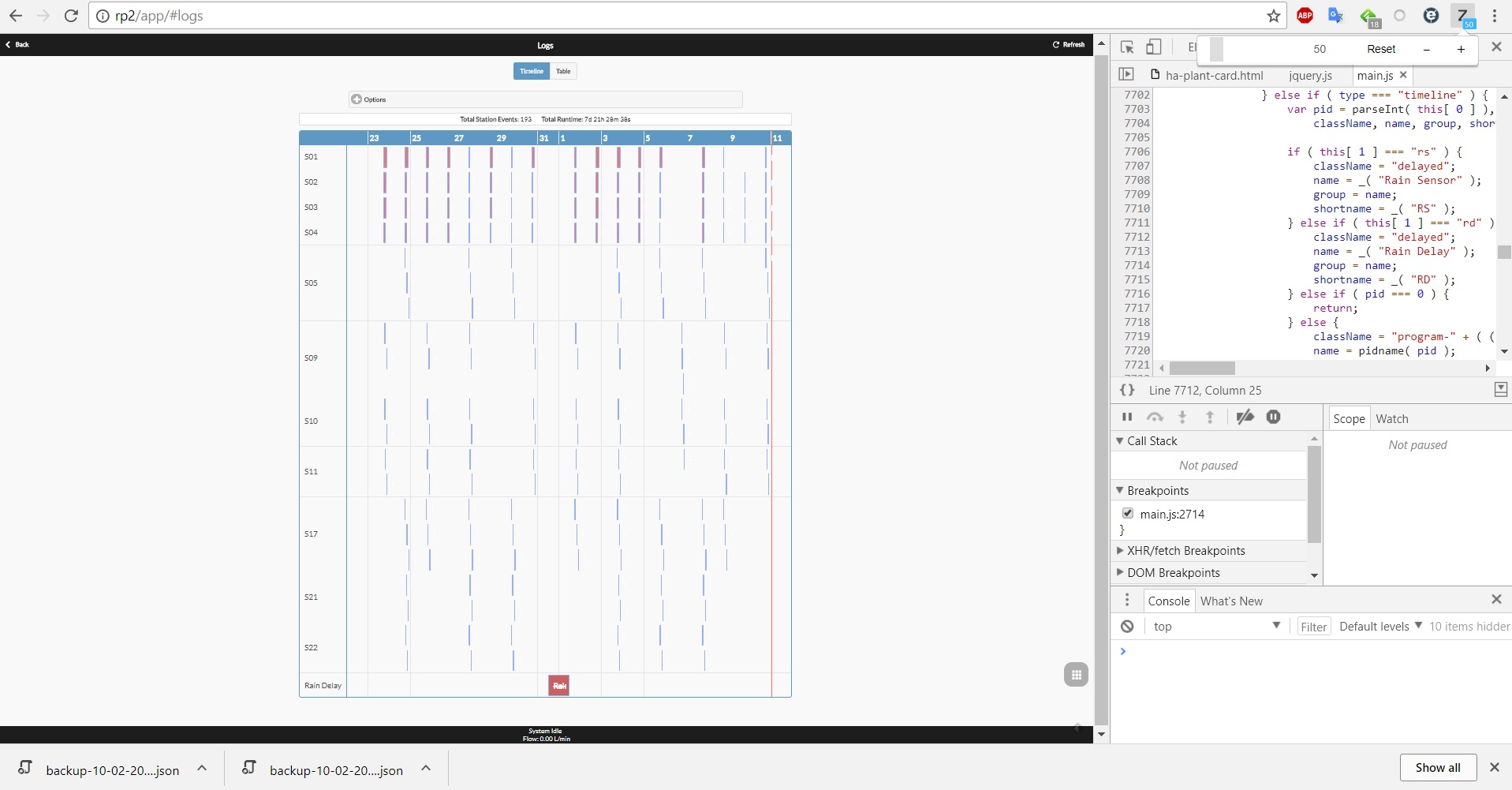

- OPENSPRINKLER LOGS MANUAL
- OPENSPRINKLER LOGS SOFTWARE
- OPENSPRINKLER LOGS PASSWORD
- OPENSPRINKLER LOGS MAC
Clicking the black pushbutton (lower-right to the LCD) will cycle through additional information, such as MAC address etc. It shows the current time, and zone status.
OPENSPRINKLER LOGS SOFTWARE
If you want to trigger a software reboot of the controller, go to Settings pages, and use the ‘Reboot’ button there. The Log button opens a new page showing the history of recent watering events, including the time, zone, and program/task information of each event. At the top-right corner of the program preview page, you can navigate to different days. The homepage also has a Program Preview button which opens a new page showing a graphical preview of the programs. When you are done, click on Submit to finish editing the program. To delete or edit an existing task, click the index of the task, which will highlight that task in yellow, then you can edit zones or the duration again. You can also leave all zones off in a task, to create a delay/gap for a specified amount of duration. Program tasks are flexible: you can set multiple zones to turn on at the same time, and you can have the same zone turn on multiple times in different tasks. First append a new task, then click a zone to enable or disable that zone from the task, and finally set the duration. Each program consists of a number of program tasks. The program editing interface (shown on the left) allows you to change the program name, configure it as a weekly or interval program, set odd/even day restrictions, set the first start time and additional start times. Back to the homepage, click on a Program button (the black-colored button creates a new program, and blue-colored buttons are existing programs) to add a new program or edit an existing program. Again, the default device key is opendoor.
OPENSPRINKLER LOGS MANUAL
At the homepage, you can also click on “Manual” to open the Manual Control page, where you can start a test program or any of the existing programs. Click on “Settings” at the lower-left of the homepage, this will open the Settings/Options page (middle image above), where you can configure the time zone, device name, zone name, and other options. The Homepage (left image above) shows the current time, status of each zone, and buttons that lead to other pages. The default device key is opendoor, which you can change in Settings. Open a browser and type in the IP address, it should open OSBee’s homepage show below. This IP address is printed on the LCD screen at the bottom.

In WiFi station mode, OSBee obtains an IP address from your home WiFi router. If you want to change the WiFi network, you can perform a factory reset and it will go back to AP mode. From now on, it remembers your WiFi and will always attempt to connect to it when it’s powered on. At this point, OSBee will attempt to connect to your WiFi, and if successful, it will reboot itself, and now WiFi configuration is complete.

If you have already created a Blynk app token (see Section 5), you can also paste it here, otherwise, just leave the token blank.
OPENSPRINKLER LOGS PASSWORD
So choose, or directly type in your home WiFi’s SSID and WiFi password (Note: it only connects to 2.4G WiFi). The main purpose of the WiFi configuration is to let OSBee know your home WiFi’s name and password, so that it can subsequently connect to your WiFi. This should open the WiFi configuration page. Once connected, open a web browser on your phone (or laptop) and type in the IP address 192.168.4.1. Use your smartphone, or laptop to connect to this WiFi SSID (there is no WiFi password). In this mode, OSBee creates a WiFi SSID, the name of which is printed on the LCD screen (e.g. The first time you power on OSBee, or after each factory reset, the controller starts in AP (Access Point) mode. OSBee is powered by a USB adapter through a microUSB cable. Un-tighten a screw, insert the wire through the opening below it, wrap the wire around the screw, then tighten the screw. At the back of the controller there are four big screws. The positive (+) wire (often colored red) of each valve should be connected together and go to the COM terminal the negative (-) wire (often colored black) of each valve should go to an individual zone (1, 2, or 3). OSBee has four terminals marked COM (common), Z1 (zone 1), Z2, and Z3.


 0 kommentar(er)
0 kommentar(er)
